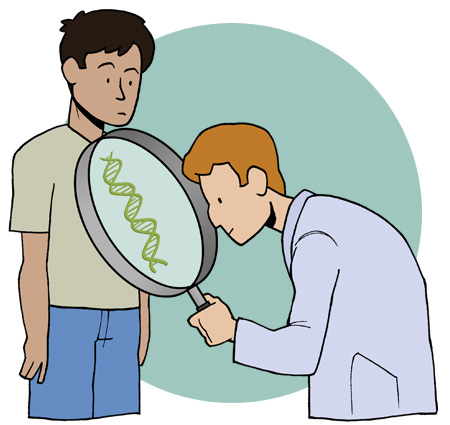click to dowload our latest edition
CLICK HERE TO SUBSCRIBE TO OUR NEWSLETTER


Published
8 years agoon
By
adminSHIRA DRUION
“Though many people have heard of Tay-Sachs disease,” says Katrina Sarig, director of Jnetics, a charity dedicated to improving the prevention, diagnosis and management of Jewish genetic disorders in the UK, “There is little awareness of the other genetic disorders that are relatively more common among Jewish people.
These vary in severity, but include conditions that are fatal in childhood and others that may lead to chronic disability and a shortened lifespan.
“No cure exists for the vast majority of these disorders. However, thanks to scientific developments, it is now possible to greatly improve their prevention and management. We believe that knowledge is power, but understand that in the case of genetic disorders, it can also raise difficult issues,” says Sarig.
There are many precautionary measures that have been put in place to prevent giving birth to children with genetic diseases and Jnetics provides a lot of information on its website.
Ashkenazi Jews are carriers of a number of diseases, known as autosomal, recessive genetic conditions. This means that being a carrier will not cause any symptoms but should two carriers marry, there is a 25 per cent chance that each child will be affected.
These generally fatal diseases are more common in people who have Jewish ancestry than in the general population, but are not exclusive to the Jewish community.
Scientists and doctors to date have identified over 30 conditions which are relevant to people with Jewish ancestry. Some particularly affect those of Sephardi ancestry and some of Ashkenazi ancestry.
Sephardi disorders tend to be specific to the “community of birth” and do not affect all Sephardi Jews to the same extent, according to information provided by Jnetics. This means that disorders that are more common among Sephardi Jews from one region, for instance Tunisia, tend to differ from those that are more common among Sephardi Jews from areas such as Syria and Morocco.
The diseases are more prevalent in the Jewish community because for a very long time, Jewish communities were small and isolated, which meant members tended to intermarry within their own communities.
As a result, over the course of many generations, abnormal DNA was passed on within an ethnic community, even when that community was no longer small and isolated. Thus most ethnic groups have genetic disorders which are more common in that population than in the rest of the world.
“The carrier rates are high in the Ashkenazi community,” says Rabbi Yossi Chaikin of Oxford Shul in Johannesburg and director of Dor Yesharim SA, which tests for genetic diseases.
“Dor Yeshorim screens for the genes and will inform a couple who are intending to meet one another, that they are both carriers of the same disease. If that is the case and both are carriers, they should be strongly discouraged from dating with an eye to marriage.”
Rabbi Chaikin says that ideally the cross-checking of these genetic conditions should take place before a couple even meets, or as early as possible in the relationship, in order to ascertain whether they are both carriers of the genes.
If this is done too late, and the couple find out that they are genetically incompatible but are already emotionally connected to one another, they are faced with the very difficult choice and will need to seek rabbinic advice and genetic counselling to help them decide if they should go ahead with their relationship/engagement/marriage or go their separate ways.
He explains that up until a decade ago, couples who knew they were carriers of the same disease, had only once choice: to fall pregnant naturally and to test the foetus early on in pregnancy at the end of first trimester.
If the foetus was affected, the pregnancy would need to be terminated. However, this scenario presented with huge halachic challenges, not to mention the emotional and ethical toll it took on the couple.
The choices are much wider today. The latest reproductive technology methods allow for Pre-Implantation Genetic Diagnosis (PGD) which means babies will be conceived in a similar way to IVF, with the additional step that the foetus is screened for the suspected diseases before it is returned to the mother’s womb.
This method is usually sanctioned halachically (rabbinic advice must be sought in each individual case) and has ensured many healthier children are born, but incurs huge financial costs for the couple and is emotionally challenging.
Rabbi Chaikin says that “although PGD is an option, the preferred and recommended route is to have a Dor Yesharim screening and cross-checking done.
